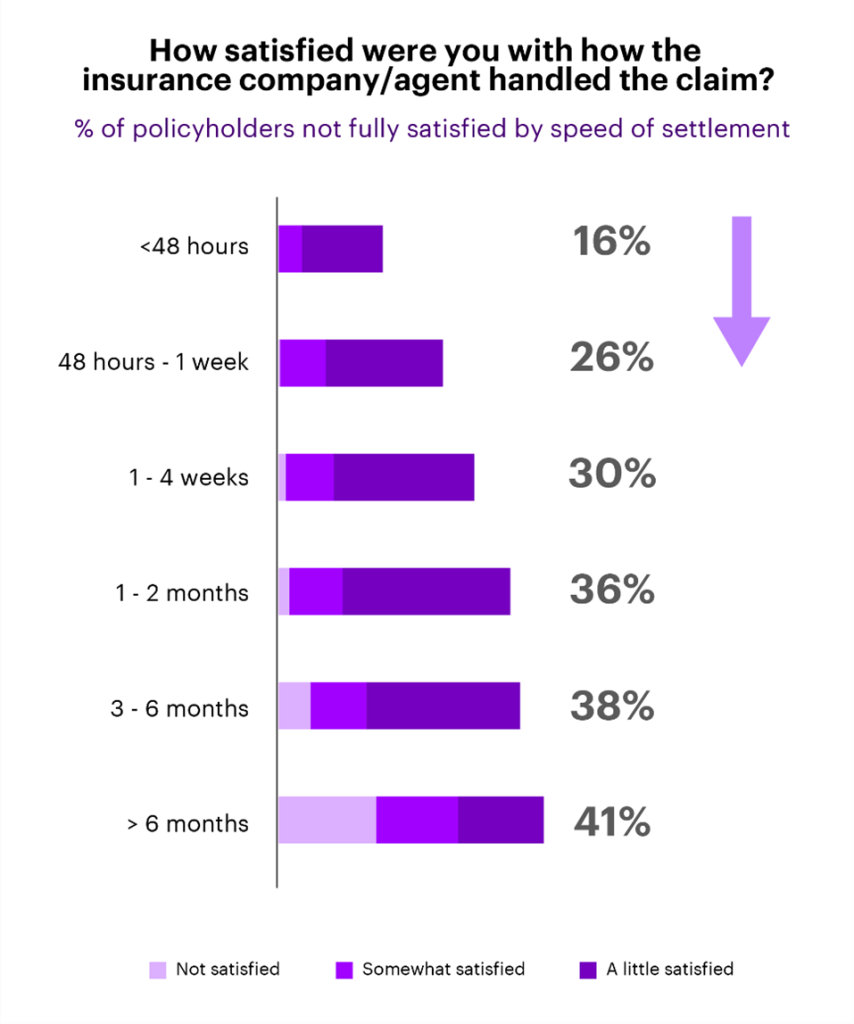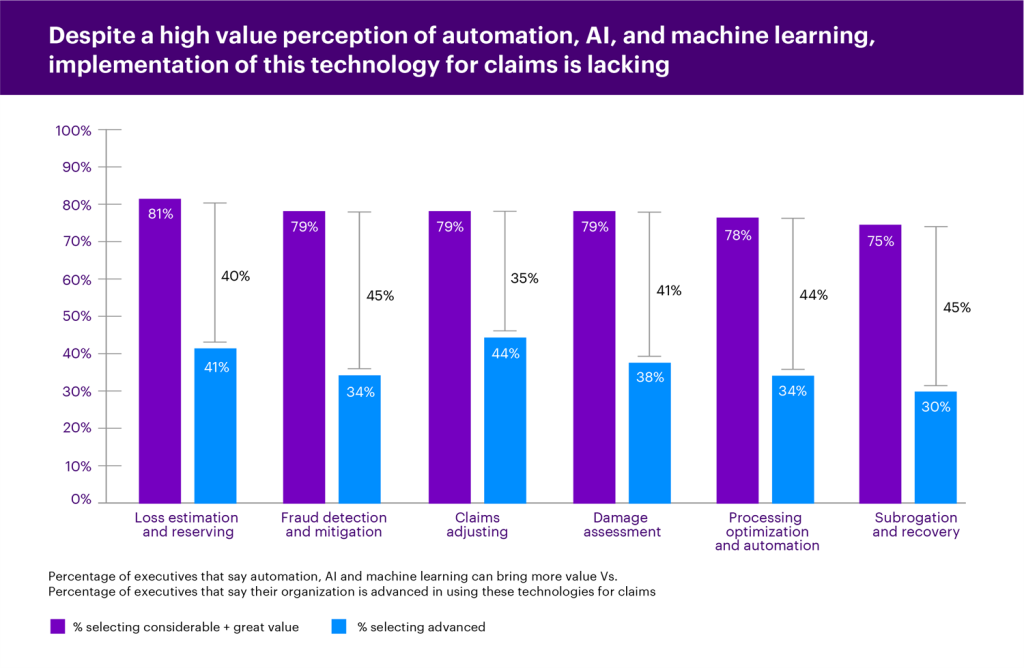Getting it right: Why is claims satisfaction so high?

An insurance claim comes at a stressful time in a customer’s life, often making it a negative experience. At least, that’s what you might assume. That’s why I was surprised when our latest research report, Why AI in Insurance Claims and Underwriting,
Speed of settlement drives claims satisfaction in insurance
Overall, our survey found that 70% of insurance policyholders said they were either satisfied or very satisfied with how their insurance company or agent handled their claim.
Click/tap to view a larger image.
For claims, this is quite high. And our survey is not the only data point to show this. A 2021 J.D. Power survey focused on auto insurance showed record-high customer satisfaction on claims, hitting 880 on a 1,000-point scale. A similar 2021 J.D. Power survey on property claims showed a slight dip in satisfaction rates (from 883 to 871), but this broke a 5-year streak of steadily increasing satisfaction scores and is likely due to circumstances not directly related to insurers (like supply chain disruptions and material shortages related to the pandemic). So, what’s causing these growing satisfaction rates?
Omnichannel communication and transparency are two reasons. Most insurers allow customers to open a claim on a website or app. Technology offers convenience in terms of using photos for an inspection instead of scheduling a person to come on-site. And some insurance companies offer a dashboard to track a claim throughout its lifecycle.
These are all important modernizations that have helped the claims experience be more seamless. However, there’s one piece that, according to our survey, drives satisfaction rates more than anything else: speed of settlement. The longer it takes to settle a claim, the less satisfied that policyholder will be.
 Click/tap to view a larger image.
Click/tap to view a larger image.
This insight is particularly important for insurers, since claims dissatisfaction is a major factor in driving policyholders to switch to another company, with 74% of dissatisfied customers either saying they did change providers (26%) or are considering it (48%).
Insurers should focus on AI to build on high claims satisfaction rates
Knowing that speed of settlement is a core driver, how do insurers continue to get high levels of satisfaction and, more importantly, build on that?
For many years, insurers have been focused on the omnichannel. We are at a point now where continued investment in omnichannel is giving diminishing returns. Of course, this is not to say omnichannel should be ignored. New routes that target younger generations, like chat apps (WhatsApp, etc.), will still be an important strategy for insurers to expand their customer base. And perfecting or modernizing whatever omnichannel offering insurers currently have will be crucial to stay relevant. What I’m saying is that omnichannel is low-hanging fruit—most of which we’ve picked already.
Instead, insurers should focus on AI to automate the settlement process to be fast, easy and accurate. Of course, this is easier said than done. Automating the settlement process requires robust data and analytics capabilities all connected in a single ecosystem.
Disconnect between intention and action
Executives already know the importance of using AI in claims. The graph below shows that, for each area of the claims value chain, at least 75% of executives said AI and machine learning can bring “considerable” or “great” value.
Yet, there’s a disconnect between this intention and taking action. The same graph shows this gap, where even the most advanced area (claims adjusting) still has only 44% of executives saying they are advanced in their use of AI, automation and machine learning. In this scenario, our definition of “advanced” is after the level “using in initial stages.”
 Click/tap to view a larger image.
Click/tap to view a larger image.
Insurance executives should look at priorities holistically
So, about 80% of executives realize the value of AI in claims, and about 40% consider themselves advanced in different areas. Not surprisingly, investments in claims will accelerate over the next three years, with 65% of those we surveyed planning to invest more than $10 million.
Insurers should not be discouraged, however, because speed of settlement priorities align to other executive priorities, such as reducing admin costs and plugging claims leakage—and the solutions are the same. That’s why executives should avoid trying to solve each problem separately and instead ask how AI, machine learning and other automation can transform the business in a way that will simultaneously hit multiple priorities. For example, increasing speed of settlement through automation will naturally reduce admin costs and avoid claims leakage, while increasing customer satisfaction and retention.
Insurance leaders also need to be courageous to tackle these larger challenges and avoid putting too much time and energy in simpler priorities (like omnichannel).
Insurers know the kind of value AI can offer, but they are falling behind in implementation. Luckily, the recent surge towards the cloud will help. Cloud is a crucial foundation to leverage real-time data and modeling that will fuel this type of automation.
Overall, there’s still a lot of work to do to get technology platforms to the point where they can automate speed of settlement and better leverage AI across the business. But it’s clear that AI and automation is where the investment should be going for insurers to reap the most benefits: satisfied customers, empowered employees and a more resilience business. Read our full report on AI-led Transformation in Insurance to learn more.
Get the latest insurance industry insights, news, and research delivered straight to your inbox.
STANDARD DISCLAIMER:







